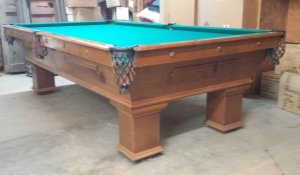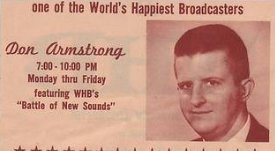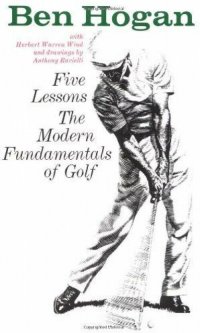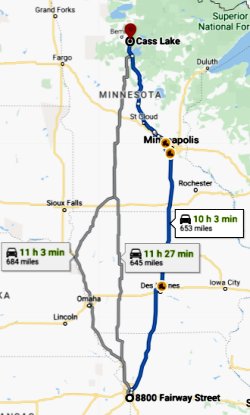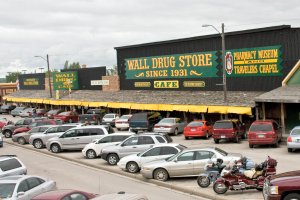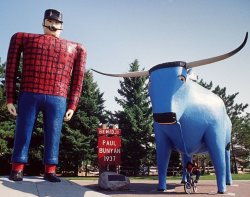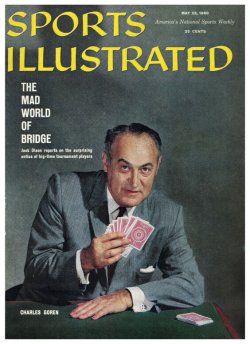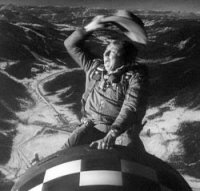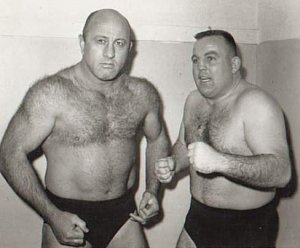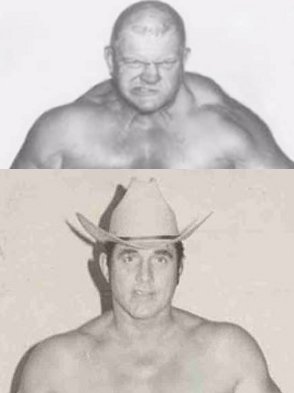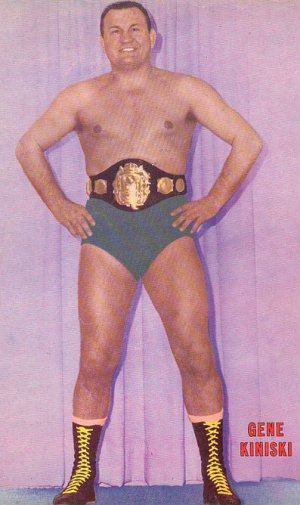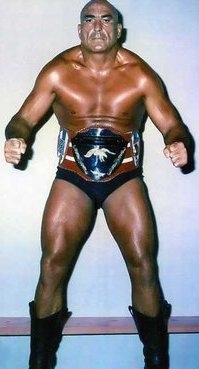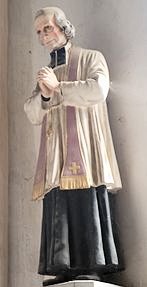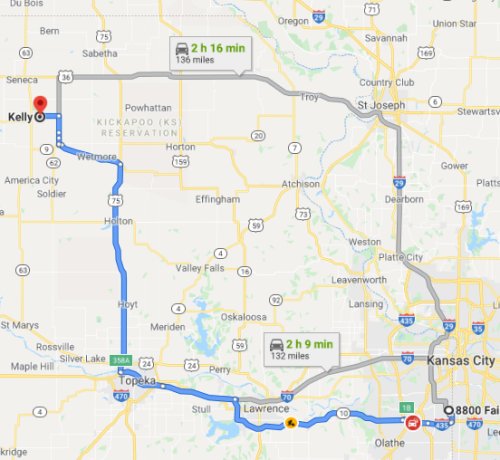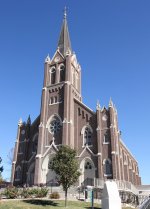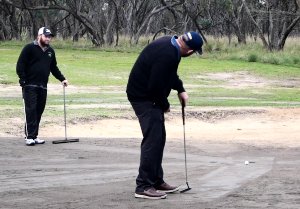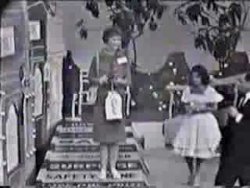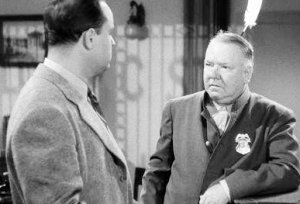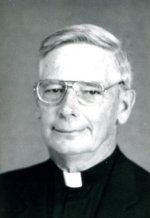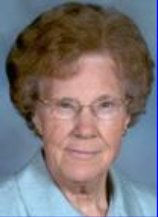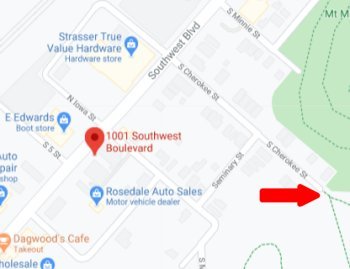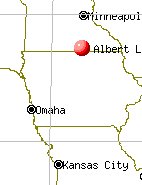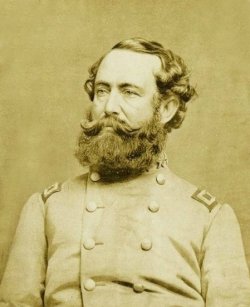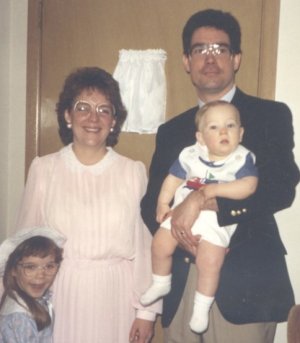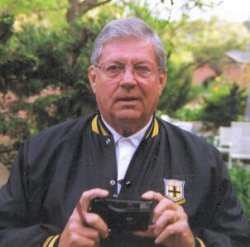Other events Continue reading

We moved from Prairie Village to Leawood at some point during the summer of 1962. This allowed me to walk to and from Rockhurst High School. My sister Jamie went to first grade at Curé of Ars1 school, a brand new parish and school that was about 1.3 miles southwest of our house.
Boy Scouts: I was still in my original troop (#295) during the summer of 1962. I went to Camp Nash with that troop during the summer. By the end of the summer I needed only one merit badge to attain the rank of eagle.
I learned from the weekly bulletin at church that a new troop would be forming at Curé of Ars, #395. I signed up as one of the founding members. Most of the fathers running the new troop were former members of St. Ann’s parish in Prairie Village.
One scout in particular, Rob Runnels, was very disappointed to learn that he would not be the first eagle scout in the new troop. He was at least a year behind me.
I finished the requirements at some point in my freshman year. I needed only to go before a Board of Review of three officials from other troops. I don’t know why, but they did not like my attitude. They dressed me down for being, I guess, too flippant. Eventually they approved me after I promised to help someone else achieve the rank. Many guys quit immediately after becoming eagles, but that was never my intention.
I went to Camp Nash in 1963 with Troop 395. I was either Senior Patrol Leader or Junior Assistant Scoutmaster. Rob was the other one.
The neighborhood: Our new house was (and still is) in a very nice neighborhood. All the bedrooms were a little larger than those of our previous dwelling, and we also had a family room, a dining room, a fireplace, a double garage, a basement, a patio, central air conditioning, a patio, and a huge backyard. Oh, yes, it also had an attic fan that my dad insisted on running instead of the air conditioner all night all summer.
My sister quickly made friends with a girl her age name Trudy Shirley, who lived a block south of us. For some reason when Fairway crossed 89th St., the name of the road changed to Meadow Lane, which is the street that Trudy lived on.
Two boys who were one year my junior lived on Fairway. Sal Dasta was, I think, the nephew of Vincent Dasta, who had a construction company in KC and donated a lot of money to Rockhurst High School. He donated so much money that the football stadium was named after him.
Sal did not go to Rockkhurst. He went to Bishop Miege, the same school that my sister attended seven years later. The Dasta family moved at some point while I was in high school. I never spent much time with Sal.
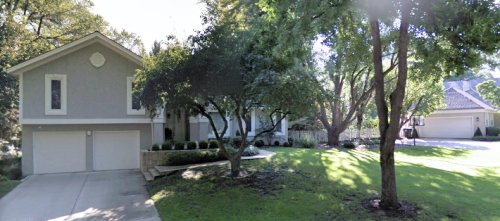
I spent a lot of time at John Cipolla’s house for all four years that I was in high school. His parents owned the house on the east side of the street on the corner of 89th St. They also owned the vacant lot next door. They had a daughter who was a year or two older (and a decade or two more mature) than I was. Everyone called her Sugar; I don’t know if that was her name or a term of endearment. Here are some of the reasons that I spent a lot of time at John’s house, and he spent virtually none at mine:
- A regulation basketball goal on a large driveway with a powerful set of spotlights.
- A swimming pool.
- An entire vacant lot large enough to play touch football or softball on. It included a backstop.
- High-quality balls of all kinds.
- An arcade-quality pinball machine.
- A set of weights and barbells.
- Tumbling mats.
- A 9′ perfectly balanced pool table with leather pockets, overhead lighting, a set of excellent cues, and enough room on all sides. It supposedly came from a pool hall.
- A half bath in the basement with a sign that said “We don’t swim in your toilet; please don’t pee in our pool.”
- A sister with huge gazoingies, but she was seldom around.
- A subscription to Playboy. I might have forgotten to mention this one to my parents.
There was also a beautiful set of golf clubs in the garage. They were there the first time that I visited him, and they had not moved a millimeter by my last visit.
John was adopted (and he knew it), but his parents treated him like the Dauphin. He had had polio as a child, but it did not affect him much when I knew him. He was not a great athlete, but he was OK at pretty much everything except sprinting. His parents had put in the swimming pool to help his therapy, and he was a good swimmer.
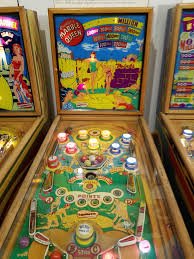
Guys were always gathered at the Cipolla house. In bad weather we usually shot pool or played pinball. John was quite good at both of these activities. A guy whose last name was Joyce lived on 89th St. He was the first non-adult I had met who smoked. He was a pretty good shot at pool, almost as good as John. I was not nearly as accurate as they were, but I taught myself how to control the cue ball. I was competitive in everything except nine-ball, and I was quite good at a game that we called “table billiards” that was played with a cue ball and three colored balls.
One of my proudest moments was when some guys whom John knew from school showed up to play touch football. I was one of the last guys chosen, but I scored several touchdowns because I was much better than I looked. As usual, no one guarded me when I went out for a pass.
John and I occasionally went to the mall together. I remember that once he deliberately cut himself on the hand. He then walked into the Christian Science Reading Room and asked the lady at the desk for some MercuroChrome. I don’t know what she said, but he was giggling when he returned.
On another occasion we were going up an escalator together. On his left was another escalator going down—like an X. At the crossing point he reached over to a unsuspecting lady on the down escalator and mussed up her hair. I could not believe he did that. I don’t deny that I probably laughed. There was not much she could do.
John’s dad’s name was Frank “Chips” Cipolla. The family pronounced the last name sih POE lah.I later learned that cipolla means onion in Italian, and it is pronounced chee POE lah. Chips owned Monarch Electric Co. My dad told me that his business was sketchy. Actually, he did not use the word “sketchy”, but I don’t want a severed horse’s head to appear in my bed.
While I was away at college I learned that John had put a loaded shotgun in his mouth and pulled the trigger. I had never seen that shotgun. I wonder what other goodies he had that I never learned about.
During the last year or two of high school another guy my age moved in next door. He went to the other major prep school in the KC area, Pembroke Country Day. Their students were called the Daisies by guys at Rockhurst. I don’t remember the fellow’s name, but he was allergic to grass, and so he stayed inside almost all the time. He was an avid chess player, and he subscribed to chess magazines. Whenever I was around he cajoled me into playing chess with him. He was not very good. Any of the guys in Rockhurst’s chess club would have destroyed him.
Music: I began to become interested in popular music around the eighth grade. By the time that the Beatles arrived in 1964 I had become somewhat obsessed. Like most of my classmates, I listened to Don Armstrong (“DA the DJ”) on WHB nearly every evening.
Unlike my classmates I created my own list, which I called WAVE’s Prime 29, every week. I typed it out and saved them all for years. It was good typing practice, and it paid off any time anyone played “Name it and claim it” and a few decades later when Trivial Pursuit became the rage.
At some point my parents bought me a pool table for Christmas. It was not in the same league as John Cipolla’s. It was only a six-footer, and the top was warped in one corner. Nevertheless, I spent a lot of time in the basement shooting pool and listening to my records. I must have listened to Highway 61 Revisited at least one hundred times.
I listened to some of my mother’s records, too. I liked the French music and the Russian music, but I had no use for her Broadway show tunes. My dad, by the way, had no records. He was tone deaf. The only music he liked was monks chanting.
Sports: I followed all sports. My favorite was football, but it was obvious that my two touchdowns in the eighth grade would probably be the apex of my football career. My parents bought me a backboard and basketball hoop. My granddad helped mount it on the roof over the garage. It wasn’t quite high enough, and the rim broke fairly soon. So, practicing on it was probably counterproductive.
I spent a lot of time in the backyard trying to improve my golf swing. my dad had a copy of Ben Hogan’s book, and I modeled my swing on his. I did not follow his advice on the waggle, which had fallen out of fashion since he retired. I still have the book fifty-five years later.
I never got to be very good at golf. My swing was pretty good, but with my puny build I had to swing very hard to get reasonable distance. Moreover, my pitching and putting were not reliable, to say the least. My vision was not the best either. I had trouble keeping track of the flight of the ball, and, of course, I was very bad at finding it in the rough.
For a handful of years I spent a week during the summer at my uncle’s house in Kelly, KS. Those adventures, including some golf outings on a rather unique course, are described in Part 3.
Vacations: My dad liked to spend his allotted vacation time in, of all places, Cass Lake, MN. I am not sure why. We went there three or four times, and we always stayed in a cabin at the same place. The name of the place was Journey’s End or something like that. We had access to the lake, but we seldom used it. We rented a boat a couple of times, but my dad was not a fisherman, and he did not know how to swim.
Maybe the idea was to escape the heat of Kansas City. My recollection is that the weather was quite good on these trips. Nevertheless, I remember that in Iowa we once stayed in a motel that did not have air conditioning. The manager brought a tiny fan into the room. It did not help. The heat did not bother me; it seldom does. However, the rest of the family suffered.
Instead of water sports my dad and I played golf almost every day. The local course had sand greens like the one in Seneca, KS, that we played on when we visited Fr. Joe in Kelly. We played there a few times, but mostly we drove to other places in the area that had traditional courses.
Perhaps I should mention that my dad was not a good golfer. For one thing he was left handed, but he played golf right-handed, the opposite of Phil Mickelson. He had no power, and his ball always sliced. He was not a bit scientific. It annoyed me when he asked me what he was doing wrong. I wanted to say, “Well, your grip keeps you from snapping your wrist properly. Your stance prevents you from twisting your hips, and you always swing outside-in. You should fix all of those things first.” Instead, I just mumbled “I don’t know.”
His short game was much better than mine, however. So, we kept on playing for years. I don’t know if he enjoyed it. I enjoyed being on a golf course, but I usually ended the round in a bad mood.
Usually we drove up through the center of Iowa to Minnesota, but once we must have taken the western route through Nebraska and South Dakota. At my insistence we stopped at Wall Drug, the biggest tourist trap ever. I wonder what Wall Drug would have done if someone asked a clerk where they kept the aspirin.
We stayed overnight in Rapid City, which I thought was a pretty nice place, mostly because I found a radio station that played rock and roll music. The next day we went to Mount Rushmore. I think that we then drove up to North Dakota before we turned east to my dad’s favorite spot.
More than once we also drove up to Bemidji, where Jamie and I gaped at the huge statues of Paul Bunyan and Babe the blue ox and the singularly unimpressive source of the Mississippi River. Bemidji also had a rather nice golf course.
For the life of me I cannot remember what else Jamie did on these trips.
Driving: During the summer of 1964 I took the drivers’ education course at Shawnee Mission East High School.2 I walked to the classes. It was the first time since kindergarten that I attended a public school. The rest of the students all knew one another.
At least one of the instructors was a (football, I think) coach at SME. On our first practice drive I was in a car with him and two girls. One of the girls went first. After driving very slowly and carefully for five or ten minutes she came to an abandoned railroad track and proceeded to cross it. The instructor was in the passenger’s seat in front with the window rolled down and his arm hanging out. As we crossed the track he smashed his fist down on the top of the car and announced “We just got hit by a train.”
The girl driving the car was paralyzed with terror. The other girl had to take over the driving while we were still on the track.
I passed the driving test without too much difficulty, and I received the highest score on the written test. It was fun to listen to the other students asking one another who was Wuh-VAH-duh.
I got my driver’s license on my sixteenth birthday. That fall I had a very minor accident in the parking lot of my dentist’s office. I did not do the right thing, and, for the first time in my life I could have (probably should have) gotten in a lot of trouble. However, by that time I had attended mass a truly incredible number of times and I had amassed a large number of prayers and indulgences. My guardian angel looked after me.
Amusements: At some point I learned how to play bridge. I don’t think that they taught me. Who would have been the fourth? I think that I must have read Charles Goren’s book on bridge that was on the bookshelf in the living room. Then I must have played with three of my high school friends a few time, although I have no memory of the specifics. It would be easy to get a foursome at Dan Waters’ house, and I went there several times.
I remember that once John Williams and I went to Worlds of Fun to hear the Shadows of Knight, the group that scored with Gloria. They were awful.
I went to a few movies with other guys from school. The school showed The Mouse that Roared, which was pretty good. I was very impressed by Peter Sellers, and the board game Diplomacy that the diplomats played in Grand Fenwick intrigued me. I discovered that there was a real Diplomacy game and brought it with me to Ann Arbor.
Twice I went to movies by myself. On the yearly Jesuit holiday one year I walked up to the Ward Parkway Mall to watch West Side Story. That was weird; I was the only person in the theater. The other occasion was to see Dr. Strangelove, my favorite move of all time. For some reason I could not persuade anyone to go with me.
The most memorable time of all of these years was when a bunch of us went to the American Royal auditorium in KC KS to see the greatest wrestling card in the recent history of KC. A few preliminary matches (one with midgets!) preceded the two headliners.
In the second-to-last match the North American Tag-Team Champions Bob Geigel and Bob Brown (two local wrestlers) against Dick the Bruiser, the heel of all heels, and Cowboy Bob Ellis, the all-American good guy complete with white cowboy hat. Heels never paired up with pretty boys, and Geigel and Brown always cheated. So, for one night Dick the Bruiser became the world’s ugliest pretty boy. This may have been the only time ever that the Bruiser and the Cowboy teamed up.
Since it was a title match, it was best two falls out of three. The NATTC was a local belt, and so Geigel and Brown had to win the third fall, which they did through some illegal tactic that I don’t remember. They couldn’t let this belt leave the KC area unless Bruiser and Ellis were scheduled to return soon, which was highly unlikely.
What I vividly remember was that during the second fall Bruiser was lying helpless on his back with his head lifted a few inches off the mat. Brown went over to him and tried to push the head down with one foot. It did not budge. Then—I swear this actually happened!—Brown stood on his forehead for a few seconds while Bruiser used his massive shoulder muscles to keep his head off the canvas. Then, of course, Cowboy Bob came to the rescue.
The final match between WWA World Champion Gene Kiniski and local hero the Mongolian stomper was easily the best wrestling match I have ever scene. Kiniski wiped the floor with the Stomper in the first fall. The second fall started the same way, but then the support of the local crowd revived the Stomper, and he pinned the champ. Nobody got too excited. Everyone knew that each guy would
In the third fall the Stomper again overcame early difficulties to gain control. He had Kiniski in an airplane spin, which was the prelude to his finishing moves. The crowd got very excited, but somehow Kiniski’s boot hooked on the top rope causing the Stomper to fall on his back, and Kiniski landed right across his shoulders.
It was the most beautifully choreographed maneuver that I ever saw. 1-2-3 the match was over. Kiniski won, and the crowd was in an uproar.
Food: My mother was a great cook. Her meals were nutritious and delicious. We had my favorite, fried chicken, nearly every week. Dessert was not always provided, but sometimes my mother would bake apple or cherry pies that were to die for. I also admit to consuming a substantial amount of potato chips and cokes.
We seldom went to restaurants. Instead, my dad decided that we would enjoy steak dinners every Saturday nights. If the weather was decent, he would grill them, and I certainly cannot complain about the results.
My parents really provided a wonderful environment for my sister and me. It met or exceeded the lifestyle of wholesome suburban kids on TV.
1. The curé of Ars is better known as St. John Vianney. Curé just means “parish priest”. It always struck me as very strange that whoever came up with the name of the parish in Kansas used the French word for priest but the English word “of”. The Catholic Encyclopedia says that during the last ten years of his life (which ended in 1859) he heard confessions for sixteen to eighteen hours per day. I doubt that many of the twenty thousand who flocked to Ars every year were dancers. J.V. refused absolution to all who engaged in “paganic dancing.”
2. There is a town named Shawnee and a town named Mission. Shawnee Mission is the name of the postal district and educational district that includes those towns, Overland Park, Prairie Village, Leawood, and others. As of 2018 27,648 students attended classes at the district’s five high schools, five middle schools, thirty-four elementary schools, and six instructional centers. Over 400,000 people now live in the district, more than in Wichita, the largest city in Kansas.


